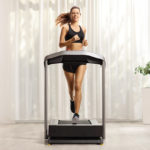Before considering whether it’s necessary to compare clean and snatch, let’s first compare their features. This article can assist athletes and coaches alike to increase their understanding of these movements by bettering their biomechanics knowledge; ultimately leading to enhanced lifting quality as well as program design.
Where the bar finishes is the key distinction between clean and snatch. In clean, you lift it from a platform onto your shoulders; in contrast, in snatch, it moves directly from ground position up toward overhead position in a smooth movement.
What Is Snatch? mes Snatch is one of the exercises in Olympic weightlifting competition, typically performed as the initial exercise prior to Clean & Jerk (C&J). Snatch requires speed, strength, agility, flexibility and mobility of its main joints for success in competitions.
Pros & Cons of the Olympic Snatch:
Olympic Snatch training provides an effective means of developing overall strength and explosive power; may assist other sports to increase power; strengthens joints and muscles, as well as adding variety to any basic strength program; although its drawbacks should not be neglected.
Exercise; Mastering its technique often requires months or years;
High risk of injury when training too quickly with loads; Bar weight tends to be significantly lighter for C&J exercises than they would be with Snatch exercises.
How Can You Play Snatch? The Olympic Snatch Competition comprises five phases.
Starting Position
An athlete grabs the bar using hookgrip with wide (snatch) grips and sits down, arching his back slightly to assume starting position. In this position, shoulder projection should fall slightly in front of knees while center of gravity sits midfoot while arms remain straight and relaxed.
Snatch Pull
An athlete performs the Snatch Pull by lifting the bar from its platform as close to their legs as possible, keeping balance in the middle of his foot, covering with shoulders the barbell, keeping muscles relaxed while pulling for as long as it takes until reaching power position or “contact point”.
Power position
An athlete strikes the Power Position with forceful knee and hip straightening and jumps upward to direct both elbows upward.
Turnover and Catch At full extension, an athlete instantly switches directions of movement downward, fixing the bar above his head with straight arms in a low squat position and making an abrupt turnaround and catch.
Recovery within an overhead squat involves standing with straight legs while holding an unloaded barbell over his head.
At competitions, once an athlete has adjusted and secured the barbell, the judge gives instructions for him or her to lower it to the platform.
What Is Clean/Clear & Jerk
Clean & Jerk (or Clean and Jerk, as its commonly known in Olympic weightlifting competition) is one of the exercises performed as part of Olympic weightlifting competition and should take second place during competitions.
Olympic clean and jerk is an impressive and complex movement. As its name implies, this complex workout consists of two sections. CLEANing begins by pulling off of platform then lifting bar onto shoulders before JERKING off onto overhead position in overhead position – these steps define CLEANing phase of clean-jerk training.
There are three JERK styles:
Split Jerk involves pushing an overhead bar into an athletic lunge position; Power Jerk involves an athlete pushing from their shoulders while spreading their feet approximately shoulder width apart and placing their knees up at 90-degree angles so as to form a semi-squat before straightening his knees before straightening their legs out again and straightening them again;
Squat Jerk – When performing this movement, an athlete replicates the power jerk movement by placing the bar above his head but, when fixing his position with full squat position then rising back up into fixation position.
To have his attempt recognized by judges as successful, an athlete must hold the weight above his head with straight arms while simultaneously straightening and placing parallel feet under it.
Pros & Cons of the Olympic Clean:
Strength Training with Olympic Clean: An Innovative Way of Enhancing Strength, Explosive Power and Muscular Stamina | JLL Clean is an exciting, dynamic strength-training routine, which strengthens joints and muscles alike while adding variety and depth to strength-training routines; The weight of bar used during an Olympic Clean is higher than in Snatch; its appearance looks great too ;
As with other martial arts disciplines, Tai Chi requires high-quality teaching which may not always be easily available;poti learning the technique requires months or years of effort and requires specific upper body mobility; and there is also an increased risk of injury when beginning training too quickly or when undertaking loads too rapidly;
How Can You Perform Clean & Jerk (also called Clean as part of Clean and Jerk exercise) consists of five phases that take approximately 5 seconds each to perform: Clean (preliminary part), Jerk (3rd stage), Hold (2nd stage) and Clean (3rd phase).
- Establish initial location.
Starting position is designed to maximize effective angles for pull and acceleration. An athlete places his or her feet shoulder-width apart with feet turned slightly outward, the balance point being in the middle of both feet, lower back arched slightly forwards and hands in a wide hookgrip slightly beyond their shoulders.
- Clean Pull.
In Clean Pull, an athlete pulls the bar close to their legs as possible while simultaneously maintaining balance in midfoot, shoulders and arm muscles while relaxing them as much as possible. Pulls continue until reaching “contact point”, typically located somewhere around mid-thigh but sometimes further upward. - Power position. This phase of an exercise occurs when both knees & torso are slightly bent, an athlete stands on both feet evenly with equal foot placement, the barbell is pressed against their thigh for pressing with both shoulders & knee joints at an equal verticality, shoulder joints are close together as are knee joints, creating maximum power through simultaneous work between back & leg muscles. It often resembles jumping.
- Turnover and Catch.
Right after full extension and when the barbell has reached mid torso level, an athlete switches direction downward quickly by rotating their elbows quickly while keeping them close together before catching it with low squatting motions. - Recovery Up.
Once they’ve secured their barbell to their shoulders in deep squat position, athletes must stand back up quickly; making an accurate transition from eccentric to concentric muscle mode an essential technical aspect of recovery – which occurs as you descend to full squat and quickly stand back up – this allows their muscles to contract before quickly standing back up again. After lifting from this squat position, lifters typically have two seconds or so before commencing with their jerk move.
Snatch Versus Clean Hearing about an athlete being adept in one area but falling flat when trying to do both tasks simultaneously is far too familiar a scenario. Conversely, however, is also often true: three attempts of Snatch and only barely twist into one while at C&J attempt three they require jumping over all opponents to “catch” on medal – making understanding differences between Snatch vs Clean so paramount for performance and winning medals! For this reason alone snatch and Clean should always be put under close examination! This question of which discipline has more importance when dealing with Olympic medalists: which will they specialize more? This makes understanding differences between Snatch and Clean and Jerk both require different approaches when competing at C&J competition. This makes understanding these disciplines very pertinent: it must take place as soon after trying three attempts in Snatch they barely twist in three attempts while clean and Jerk very complex due to jump over rivals! That is why understanding differences between Snatch Vs Clean Jerk essential.
One cause of these difficulties lies with coaches and athletes failing to see any distinct differences in technique between two exercises; consequently, training and learning take place according to equal requirements, leading to one exercise suffering technical skill degradation over time.
So what exactly is the difference between snatch and clean?
Start off by noting the significant technical parameters differences between these exercises both visually and statistically. Back in 1978, Soviet sports scientists (V. Frolov and A. Lukashev) conducted extensive research which led them to draw a number of conclusions regarding differences. Most importantly, differences were associated with significantly heavier weight (14-30% on average) and narrower grip in clean; also starting position was 10-15 cm higher for clean than for snatch; knee joint angles in cleans (averaged at 89 deg compared with 74deg), plus overall movement phases saw more open angles present;
Clean pull lasts longer (0.52s), due to differences in bar weight. Comparing time indicators of transition and full extension phases between exercises shows snatch with shorter transition (0.13 s) than full extension (0.17 s), while clean transition is longer (0.15 s) than full extension (0.13 s). Transition takes longer due to greater weight of bar movement at slower speed; full extension however happens faster as body is more verticalized hence angle of inclination reduced more significantly with cleaner.
Another crucial technical distinction between snatch and clean is this: when performing a wide grip snatch with limited use of elastic properties of the bar and much longer paths of application of efforts than clean. As such, success in performing the snatch lies with its technical components: maximum speed and maximum height are decisive elements; hence success lies directly within muscles’ contraction speeds, nervous system responsiveness, vector of application of efforts applied – or simply put, upon technical skill levels of athletes performing it.
Clean results in the clean depend on being able to utilize elastic properties of the barbell correctly; according to Alexei Aronson of USSR national team.
Medvedev explored this issue back in 1986. For optimal clean performance, an emphasis must be put forth both during pull and power position for an accentuated application of efforts – with more powerful pull required to take full advantage of elastic properties of barbell and achieve maximum speed in short segments of training.
Acceleration power also offers you a chance to “release yourself”, temporarily shifting muscle work from extension mode into turnover mode and creating rigidity necessary for receiving and receiving barbell in squat. For this element to succeed, active efforts must begin as early as during pull.
Remind athletes that an overly powerful or explosive start to movement in snatch and clean, in which force on support exceeds 150%, could cause the loss of rigid body links during pulling or power position phase, leading to errors during subsequent phases.
Comparing forces applied to support during pull and power positions between cleans and snatches shows that, due to weight and length differences in their application path, clean forces tend to be lower by 5-8% in clean positions than they would be due to more consistent efforts over longer path length.
Thus, this comparison between clean vs snatch highlights their biomechanical differences, so beginning athletes are advised against performing exercises to develop both techniques simultaneously in one session. Doing this type of combined workout during competitive periods only should be accepted when training to prepare athletes for stressful conditions of competition is the goal of training sessions.
Get answers from expert on FAQ. For instance: For any website to operate properly it requires that certain functions such as providing and hosting for both data and links which could contain harmful contents to be completed successfully in an efficient and safe way. In case any of the information below does not make the cut – read below
Are snatches more difficult than cleans?
A common assumption among lifters is that snatching is technically more challenging and cleaners need greater strength; generally though, you ought to be capable of cleaning more frequently due to being able to perform front squats rather than overhead ones.
Whats the difference between clean & jerk and snatch exercises? A Clean & Jerk allows you to utilize all your strength; in contrast, snatch is focused on form coordination mobility; both movements help increase muscular mass speed strength.
Conclusion
Thus, this analysis illuminates the biomechanical differences between snatching and cleaning. Recognizing this will enable coaches and athletes to more carefully select assistance exercises for training programs. Now it’s your turn! Are you team snatching or cleaning? And what fitness goals have each of these sports provided for? Share with me below in the comments!
Your interests might include:
Clean and Jerk Training program
Clean workout program, Snatch Training program and Jerk workout routine. Leg workout routine.











